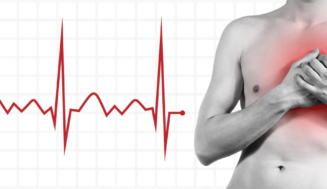Emergency Treatment of Breathing Difficulties

Breathing, a fundamental aspect of our well-being, can sometimes become labored, ranging from mild irritations to severe, life-threatening conditions. When children experience difficulty breathing, it can be an unsettling event for both parents and the little ones. While many cases are mild and manageable at home, it’s crucial to discern when immediate medical attention is required.
This guide aids in distinguishing benign causes of breathlessness and those warranting urgent intervention, offering insights into alleviating discomfort and ensuring safety.
Unraveling the Root Cause
Identifying the underlying issue is the inaugural step in addressing breathing difficulties. Distinguishing minor issues like stress, poor air quality, or mild viral infections from life-threatening conditions such as heart attacks, pulmonary embolism, or asthma attacks can be challenging. Stay alert and arm yourself with essential first-aid information in advance.
Expedited Comfort Measures
For mild breathing issues, the following techniques can be employed to ease discomfort:
Deep Breathing Exercise
Activate the parasympathetic nervous system to induce calmness. Place a hand on the abdomen, inhale slowly through the nose ensuring the stomach expands, and then exhale, allowing it to contract. Implement a rhythm of inhaling for two counts and exhaling for four counts, and repeat for approximately five minutes to relieve stress and facilitate breathing.
Lip Breathing Method
Particularly beneficial for individuals with asthma or COPD, this technique involves inhaling through the nose with a closed mouth and exhaling through pursed lips, akin to blowing out a candle. Maintain a 2:4 count for inhaling and exhaling. This practice aids in keeping the airways open longer and expels trapped air from the lungs.
If these techniques prove ineffective, seek emergency medical assistance immediately.
Identifying Emergency Situations
Recognizing the signs that warrant urgent medical attention is paramount. Respiratory distress is a common reason for emergency room visits. Be attuned to the following symptoms:
Asthma Attack Symptoms:
- Chest tightness;
- Shortness of breath;
- Skin color changes, especially around the lips (bluish or whitening);
- Rapid heartbeat;
- Neck or chest muscle strain (retraction);
- Panic sensations.
Heart Attack Indicators:
- Chest pain;
- Dizziness;
- Sweating;
- Pain radiating to the arms, neck, jaw, or back.
Prompt action by calling 911 or the local emergency number is essential when any of these symptoms manifest.
In Summary
Breathing difficulties can span from slight discomforts to grave, life-threatening scenarios. Understanding their origins and employing rapid relief methods like deep breathing and lip breathing can mitigate discomfort in less critical situations. However, maintaining vigilance and recognizing alarming signs of emergency medical needs is vital. Your health and safety should always take precedence, warranting professional assistance when necessary.
Note that this article serves informational purposes only. For tailored advice on addressing breathing difficulties and ensuring optimal well-being, seek professional consultation.








